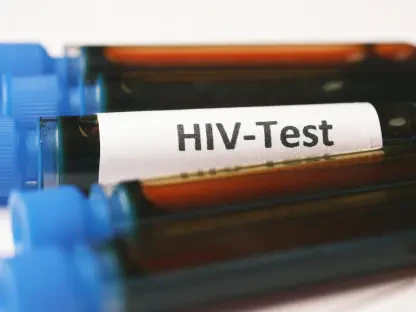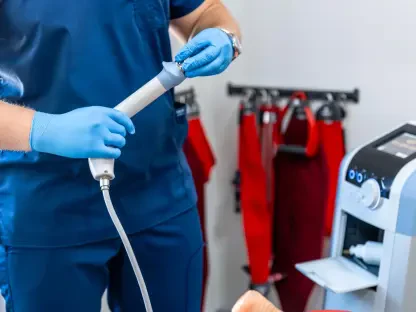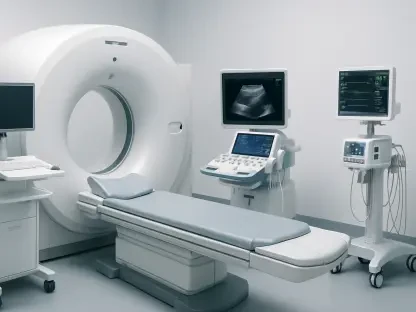The Hospital Supplies Market is on the brink of substantial growth, expected to reach USD 72.8 billion by 2032, with a robust compound annual growth rate (CAGR) of 5.45% over the next several years. As an integral part of the global healthcare system, this market is evolving rapidly, influenced by technological innovations, regulatory changes, and shifting expectations of patients and healthcare providers. These driving forces are redefining how hospital supplies are manufactured, distributed, and utilized on a global scale.
Market Dynamics and Influences
Key Components and Drivers
The Hospital Supplies Market comprises a diverse range of essential products crucial for daily operations in healthcare settings. These products cover everything from consumables like surgical gloves, syringes, and bandages to durable equipment used in diagnostics and surgery. This extensive market is categorized based on product type, targeted end-users such as hospitals and diagnostic laboratories, applications including surgery and infection control, and distribution channels ranging from direct to online sales.
A major driving force accelerating this market is the increased demand for disposable medical supplies, particularly heightened by the COVID-19 pandemic, which intensified the focus on infection prevention. In response, healthcare facilities prioritize acquiring supplies that meet stringent quality and environmental standards. Furthermore, the incorporation of advanced medical technologies such as smart devices, AI-driven diagnostics, and automated supply chain systems plays a pivotal role in optimizing healthcare supply management. This technological leap not only enhances the functionality of the products but also increases their traceability throughout the healthcare system.
Regional Disparities and Patterns
Examination of regional dynamics reveals distinct patterns in the Hospital Supplies Market, reflecting variations in healthcare infrastructure, economic conditions, and regulatory environments. In North America, the market is robust, bolstered by advanced healthcare systems and stringent regulations enforced by authorities such as the Food and Drug Administration (FDA). Europe follows closely, primarily driven by an aging population and a well-established public healthcare system in key nations like Germany and the UK.
Conversely, the Asia-Pacific region is poised for the most rapid growth, fueled by burgeoning healthcare infrastructures in countries like China and India, which are experiencing surging patient numbers that demand efficient, high-quality hospital supplies. Meanwhile, developing regions like South America and the Middle East & Africa witness substantial market growth due to increased government healthcare initiatives, rising foreign investment, and improved overall access to healthcare services.
Competitive Landscape Analysis
Major Players and Strategies
The competitive landscape of the Hospital Supplies Market is highly dynamic, with numerous global leaders and regional contenders vying for market dominance. Notable multinational companies, including Ethicon, Smith & Nephew, Owens & Minor, B. Braun Melsungen, Johnson & Johnson, and 3M, are actively engaged in maintaining their leading positions. These industry giants focus heavily on innovation, emphasizing product development, cost efficiency, and strategic alliances. A significant portion of their investment is dedicated to research and development, leading to the creation of advanced hospital supplies that are both sustainable and economically beneficial.
These companies are also keenly aware of the importance of sustainability and environmental responsibility. As the global healthcare industry increasingly prioritizes eco-friendly solutions, these organizations are committed to designing products that minimize environmental impact without compromising on performance. This dual focus on innovation and sustainability is crucial for companies seeking to sustain a competitive advantage in this rapidly evolving market.
Innovation and Future Opportunities
The Hospital Supplies Market is ripe with burgeoning trends and emerging opportunities that promise to shape its future. A significant trend is the heightened demand for stringent infection control, increasing the requirement for personal protective equipment (PPE), disinfectants, and sterilized supplies. Furthermore, as telehealth services expand, there is an increasing need for home-based diagnostic kits and remote monitoring devices. Investments in healthcare infrastructure by both public and private entities are generating demand for comprehensive hospital supply portfolios, notably in new hospital constructions and facility upgrades.
Technological advancements remain at the forefront of market evolution. The incorporation of smart sensors, IoT-enabled tracking technologies, and AI-driven diagnostics is transforming the operational efficiencies of hospitals. These innovations enhance the accuracy of patient care and optimize supply chain processes within healthcare institutions. Additionally, a heightened emphasis on patient safety and regulatory compliance is steering institutions toward adopting standardized supply systems that guarantee high levels of safety and efficacy.
Future Outlook and Strategic Directions
Key Insights for Stakeholders
The future of the Hospital Supplies Market is undeniably promising, showcasing robust growth fueled by technological advancements and a focus on sustainability. This market is an essential component of the healthcare industry, aligning with ongoing shifts in healthcare delivery and regulatory frameworks. For stakeholders, aligning with industry trends such as digital transformation and innovative supply chain solutions will be paramount for capitalizing on emerging opportunities. The sector’s strategic focus on performance, hygiene, and regulatory compliance highlights the need for reliable and innovative partners to ensure optimal patient care outcomes.
Strategic Focus for Industry Players
The Hospital Supplies Market is set for remarkable expansion, anticipated to achieve a valuation of USD 72.8 billion by 2032. This promising growth, fueled by a robust compound annual growth rate (CAGR) of 5.45%, reflects swift advancements in the healthcare sector over the forthcoming years. As a pivotal area within the global healthcare system, the market undergoes rapid evolution. Key factors contributing to this transformation include technological advancements, regulatory shifts, and evolving demands from patients and healthcare providers. These elements collectively reshape the landscape of hospital supplies, impacting how these critical items are manufactured, shipped, and employed worldwide.
Technological innovations in areas such as digital health tools, smart medical devices, and improved supply chain management systems enable more efficient processes and better patient outcomes. Additionally, regulatory changes are driving standards to ensure the highest quality and safety in hospital supplies, facilitating access to cutting-edge medical technology. Moreover, as patient and provider expectations continue to rise, there is an increasing demand for sustainable, cost-effective, and patient-friendly solutions. Consequently, the hospital supplies market is poised to adapt and thrive amidst these dynamic influences, paving the way for a more responsive and progressive healthcare environment on a global scale.









